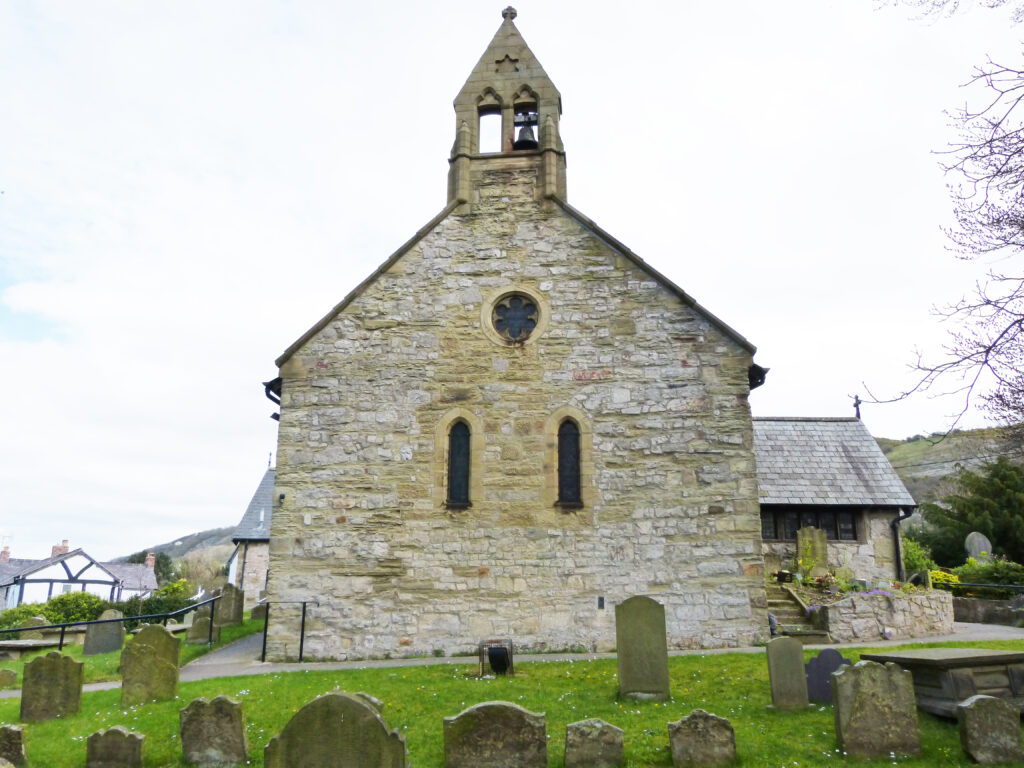Alfred Torkington and the Small Miserable Church
The Rev. W. A. Leighton, F.L.S., in his work on the Vale of Clwyd Churches found little of merit in the Church of St. Melyd:
‘The Church is small, miserable, and dilapidated, plastered all over externally, of one pace, with a nondescript ruinous bell-turret and one bell at west, porch on the south, and a covered roof inside, all modern.’
The parishioners found it difficult to use. The triple decker pulpit was positioned half way along the left wall so that the front of the congregation was facing the wrong way. When it was time to sing the whole congregation had to turn around to face the choir which was seated at the west end, a legacy of the long gone minstrels’ gallery. By June of 1884 the restoration plans prepared by Mr Arthur Baker, the architect of London went out to tender and Mr. Alfred Torkington of Rhyl was selected to do the work. The last service was held on July 27 and the congregation worshipped in the National School during the following year.
Alfred Torkington was born in 1840, the son of a Salford joiner. He followed his father’s profession but by 1871 he had become an ironmonger with two shops in Southport. His business went badly and in 1878 he became insolvent. He left the area and set up business in Bodfor Street, Rhyl as a carpenter with two men. He prospered and was responsible for the fine new building for Littler and Williams in Queen Street in 1883. It is now the NatWest Bank opposite the Town Hall. This was followed by the new Post Office on the High Street which opened in 1884, where Scope is now. St. Melyd’s received his attention later that same year and it was completed by June 1885.
In 1895 he appeared before the Official Receiver at Rhyl with gross liabilities of £3,942 3s. 10d (£350,000 in present day values) which he claimed were due to illness and losses in business and contract work. He was sent to the Bangor Bankruptcy Court where it was discovered that he had been made bankrupt at that same court in 1887 and this was his fourth appearance for bankruptcy. Sadly, the worry must have been too great for his wife who had suffered a long illness and she died at the time of the trial.
He was discharged from the 1887 bankruptcy in 1889 when it was proved that he had not kept proper books and had continued to trade when he knew he was insolvent. He had contracted debts he could not meet and had failed in business on two previous occasions. The Official Receiver concluded that it would seem that he had never received a discharge from his earlier bankruptcy. After the discharge he was given a twelve-month suspension during which time his son took over for a weekly wage of 30 shillings. On one occasion his son was sued for a trade debt but but was able to plead that he was under the age of responsibility. Alfred Torkington died in 1915.

